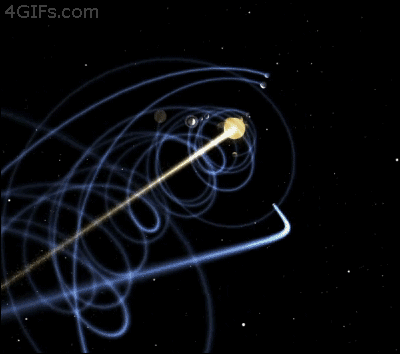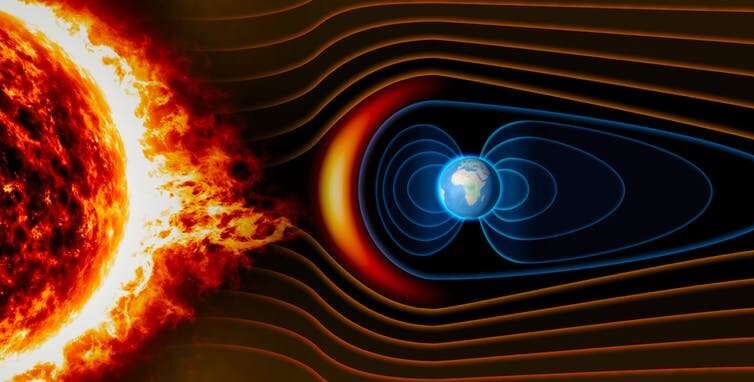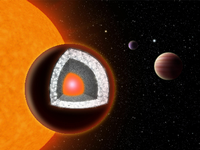
In the modern world, it’s pretty easy to get caught up in day-to-day living and forget the bigger picture of existence. It’s much easier to think about what you’re gonna have for dinner than it is to consider how fast we’re currently flying through space or that space itself has an odour.
I’ve always been fascinated by the absolutely demented things that go on in the universe. The stuff that seems so far beyond our own comprehension it just makes me feel weird. Just hook that weird stuff up to my goddamn veins, man.
If you’re keen on having an existential crisis and/or curling into a small ball, please read some of my favourite facts about space, space travel, and the universe below.
1. We’re moving really fast right now
Everything in space is moving, and Earth is not excluded. You probably already know that we’re spinning on an axis, but we’re also moving in a few other ways as well.
For those on the equator, the speed of Earth’s spin is roughly 1,670 km/h, which is pretty quick, but in the grand scheme of things, not really. We orbit the Sun at a speed of 107,000 km/h, which is obviously way bloody faster.
And that’s not even all of it, folks, our whole damn solar system is moving through space, too. The Sun has its own orbit around the centre of our galaxy, The Milky Way, which happens at an average speed of roughly 720,000 km/h, or 200 km every second. Because we orbit the sun, we get dragged along with it.

The entire Milky Way is also hurtling through space at a staggering 2.1 million km/h. In summary, we’re going very, very fast. Faster than you can even comprehend, which is metal as hell if I’m being honest.
Of course, we don’t feel any of this movement for the same reason we don’t feel the movement during most of a flight. When speed is constant, as the Earth’s is, we don’t perceive it as movement. If the planet was to decelerate of accelerate, we’d feel that just as we feel a plane or car speeding up and slowing down, only heaps more dramatically.
2. Space travel could fry our brains
We have the technology to send rovers to Mars, so why can’t we get ourselves over to that big red jerk? Well, there are a number of reasons, and potential brain damage is a big one.
In space, there are highly energetic particles usually referred to as cosmic rays or space radiation. We’re protected from these particles on earth because of our atmosphere and big old magnetic field, which even protects astronauts in our orbit to an extent. Outside of this protection, the human body is bombarded with cosmic rays, and that can be really bad for our brains.

According to research that tested the effects of this on the brains of mice, “Exposure to cosmic rays impairs brain function causing problems with learning, memory and mood that may, if the results hold true for humans, influence a person’s ability to adapt and respond in unexpected or stressful situations. This outcome could jeopardize astronaut safety and mission success.”
In other words, our brains could be so fried by the time we got to Mars that we’d lack the crucial problem-solving skills required for the rest of the mission. The jury’s still out on just how severe the effects would be on humans, but I’d wager they’d be leaning towards ‘no bueno’.
3. There are heaps of diamonds
While rare on Earth, it seems there’s a helluva lot of diamonds in space if you know where to look.
US scientists reckon it actually rains diamonds on both Saturn and Jupiter, which is practically in our own backyard in the grand scheme of things. The lightning storms on these planets turn methane into soot which then turns into chunks of graphite and finally diamond as it falls. After that, it falls for another 30,000 km, which is roughly two Earth spans. Scientists aren’t really sure what happens after that, but they assume the pressure and temperature is far too intense for them to remain solid. Vibes.
There’s even a planet about 40 lightyears from Earth that’s partly made of diamonds. It’s called 55 Cancri e and its mass is 8.63 times Earth’s with a thick layer of diamond hidden under its hot molten crust. Yum yum.

4. Space stinks
Believe it or not, space has a smell, and the consensus from those who’ve experienced it is that it stinks.
Of course, no one has directly smelled space because taking off your helmet out there for a whiff would kill you dead, but astronauts returning from spacewalks have described the smell on their spacesuits or in the airlocks afterwards. Everyone seems to have a different take on the scent of the void, but common comparisons are gunpowder, brake pads, welding fumes, seared steak, a general metallic smell, or a combination of things. Some say it’s nice, others say it reeks.

Scientists don’t really know for sure, but one explanation is that the smells are a result of the re-pressurisation that happens when astronauts re-enter a spacecraft or space station, while another theorises that the smells come from dying stars.
5. You can fit 1.3 million Earths inside the Sun
That’s it. That’s the fact. Does it make you feel insignificant? We’re so tiny. If this has put you on the verge of a meltdown, you probably shouldn’t watch the video below.
Really puts things in perspective, no? If you’re keen for even more mind-blowing space facts, you can catch tons in the upcoming season of Cosmos: Possible Worlds, which, as the name suggests, will take you on a journey to some of the wild worlds floating around out there and more. It kicks off on March 9 at 8.30pm AEDT on National Geographic.







